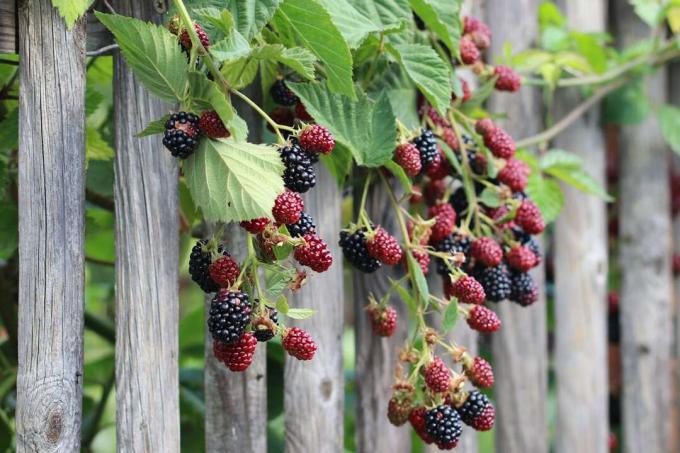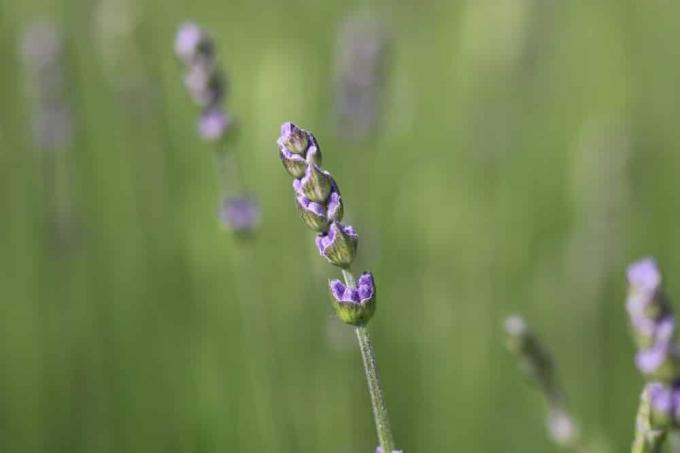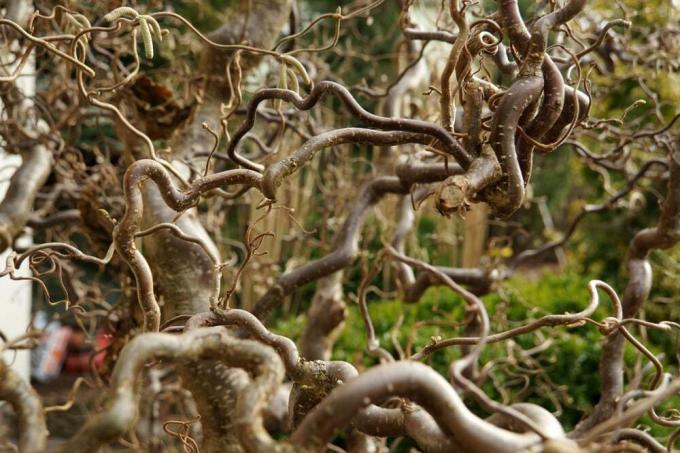

Table of contents
- choose the right time
- have tools ready
- Cut right
- Rejuvenate woody sage plants
- Harvest when cutting
- avoid errors
Pruning measures ensure that sage plants thrive and bloom profusely. Regular cuts are recommended for both useful species and ornamental plants. However, there are slight differences depending on the species.
choose the right time
When to prune a Salvia species depends on the species. The widespread sage (Salvia officinalis), which is used as a spice and medicinal herb in the kitchen, has its main growing season after the ice saints and into August. The plant becomes lignified with age and requires pruning during dormancy. A number of related species such as the steppe sage (Salvia nemorosa) remain herbaceous and enjoy pruning measures that are adapted to the respective vegetation point. These times are ideally suited to woody and herbaceous specimens:
– Perennial species should be cut twice a year
– first cut in February or March
– second cut from July to August
– Cut back subshrubs in late winter between February and March
- Radical pruning takes place before the new shoot
– Harvest pruning is recommended in July
Tip:
If self-reproduction of the common sage is undesirable, timely removal of the inflorescences is recommended. The ideal time for this pruning measure is in July.
have tools ready
Which tool you choose for your cutting measures depends on various factors. Individual plants do not require power tools. Edit these copies easily and quickly by hand. If you have planted larger areas or you have to cut woody shoots, additional utensils are helpful. These scissors make your work easier:
- Hedge shears for cutting close to the ground in large plantings of herbaceous species in the garden
- Kitchen shears for harvesting edible sage leaves
- Secateurs for rejuvenation cuts in woody plants and pruning of perennial sage species
Cut right

The steppe sage growing in the garden shines with a colorful and fragrant bloom in summer. The pruning measures should be coordinated with the flowering period of the species in order to promote it. Since the herbaceous plant dies before winter and sprout again in the coming spring, no shape or maintenance cuts are necessary. These are recommended for common sage so that the woody perennial forms aromatic leaves over many years. How to do it right:
- Cut back non-woody Salvia species close to the ground in late winter
- When pruning in summer, cut off withered flowers and stems
- Cut off dead shoots of sage officinalis close to the ground before they sprout
- then cut healthy parts of the plant to just above the woody areas
- Harvest leaves regularly from mid-May to promote shoot formation
Rejuvenate woody sage plants
Due to its perennial lifestyle, steppe or grove sage does not show any signs of aging, as this plant sprout fresh every year. The shoots of the kitchen sage lignify from the bottom up over time if no pruning measures are taken. If you leave the perennial to its own devices without using scissors, it will increasingly develop into a semi-shrub and form leaves with reduced flavor intensity. If the shoots are two-thirds lignified, a tapering derivation cut is recommended:
- look for herbaceous side shoots or swelling buds on woody branches
- select a vegetation point that is as low as possible
- Cut the plant back to a maximum of five centimetres
- Set the scissors about five to ten millimeters above this point
A notice:
After a thorough pruning, the plant drives out hesitantly. Give the crop time to recover and refrain from harvesting the leaves for the next few weeks.
Harvest when cutting
Kitchen sage can be cut back directly during harvest if the cut was missed in late winter. The cut shoots are suitable for freezing or drying, as the yields with this variant are larger and usually cannot be used up immediately.

Observe the following tips to achieve the greatest possible harvest success:
- Thoroughly shower the plant before the planned harvest cut
- let dry overnight
- Cut off herbaceous shoots to just above the woody part
avoid errors
Although pruning Salvia species is comparatively easy to do, some mistakes can occur. You can avoid this by timing the right time and adjusting the cutting measures to the respective type. If you follow the instructions below, you can avoid common maintenance mistakes:
- do not cut back into bare zones or into the old wood, but stay in the leafy area
- The exception is the rejuvenation pruning of Salvia officinalis if vegetation points are present
- Do not cut kitchen sage at sub-zero temperatures to avoid frost damage
- Don't carry out harvest pruning in September, so that subshrubs can mature
- Do not trim perennial species with scissors after flowering, as dead leaves and shoots serve as winter protection
 garden editorial
garden editorial I write about everything that interests me in my garden.
Learn more about pruning

Eucalyptus dried up: cut back now?
When a eucalyptus dries up, some owners immediately think of cutting it back. Because they want to see fresh green bud quickly. The chances of that happening may be good. But one thing must not be left out: research into the causes! Otherwise a new cycle of drying up and cutting begins.

Cut blackberries: Instructions for the right cut
Bramble branches only bear fruit for one summer, after which they are used up and die off in winter. It's a good thing that new canes grow back in time for the following year. Cutting care means: What no longer supports should be removed, young rods must be optimally trained.

cutting snowball | 13 tips for pruning
When it comes to snowballs (Viburnum), the opinions of numerous hobby gardeners differ when it comes to cutting. Main reason against pruning: Destruction of the natural appearance by pruning. Find out now when it is unavoidable and which tips should be heeded.

Pruning hydrangeas: when is the right time?
Hydrangeas are a real beauty because of their flowers. In the long term, however, the flowering power is only maintained if regular pruning takes place. Because cutting off withered or dried plant parts offers protection. The following guide shows when this measure should be taken.

Cutting Lavender | When is the best time?
Lavender is a popular perennial, but difficult to cut. Without regular pruning, the shrub becomes lignified and less robust. Choosing the right time is important for pruning. When to cut depends on the use of the perennials.

Cut corkscrew hazelnut | Rejuvenate corkscrew hazel properly
The corkscrew hazel does not necessarily have to be cut regularly, but the use of pruning shears and the like can make sense. You can read here when and how to best cut the corkscrew hazel!
